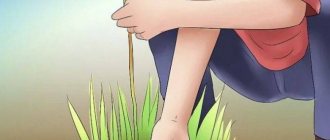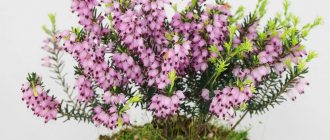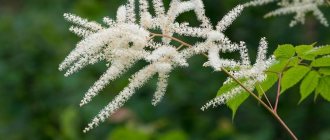Varieties and types
Or Stemless,
although this plant has this name, it is very beautiful. The lanceolate foliage is quite long and stays on the stem for a very long time. The flowers are white or pale yellow, located on peduncles.
Flowers that appear in summer are colored in shades of scarlet and purple.
An important feature is that at the end of flowering, the foliage of this species dies
Mountain perennial species. It has slightly wrinkled foliage with fine teeth along the edges. The flowers are small, yellow, and form umbrella-shaped inflorescences. The peduncle can be either low or very high. Flowering occurs in mid-spring and lasts almost two months.
Or forest
has oval, oblong, slightly wrinkled foliage up to 20 cm. The flowers are yellow with an orange spot, but there are many varieties whose colors have a variety of shades, and the flowers are not only simple, but also double.
Or auricula
a plant with dense, leathery, lanceolate foliage edged with small teeth. The color of the flowers depends on the variety, since many hybrids have been created.
This species has tall bushes with long, strap-like leaves, as well as regular yellow flowers with large stamens.
Fine-toothed primrose
or simply
jagged,
it is characterized by spherical inflorescences, which consist of a large number of white, crimson or lilac tones, the size of which varies, depending on the variety, from half a centimeter to two and a half.
It does not have particularly large and attractive foliage, but that is not its highlight. The flowers of this plant are painted in pastel yellow-pink tones, which over time flow from one to another.
The main difference of this species is the lilac-colored inflorescence, which is located on a high peduncle. It has a spherical shape and does not look like the inflorescences of other representatives.
Above the leaf rosette, consisting of light green jagged leaves and lying on the ground, flower stalks rise high, decorated with umbrella flowers of soft lilac or violet tones.
Subtleties of sowing
The growth rate of seedlings is directly related to the sowing pattern. Seeds should not be sown too thickly; it is advisable to maintain at least a minimum distance between them. The peculiarity of primrose is that its seed material is too small, which can cause difficulties for an inexperienced grower.
It is most convenient to place the seeds on a sheet of paper folded in half, from which you then sprinkle them little by little onto the ground. You can also use a toothpick. Its tip is moistened with water, the seed is glued to the damp surface and transferred to the desired location.
The choice of method depends on the number of seeds available, and if there are few, use a toothpick. There is no need to bury the seeds; they are only slightly pressed into the soil. After this, the crops are irrigated with a sprayer and covered with a lid or transparent film.
Tips for planting in the ground
Planting primrose seedlings grown from seeds at home in open ground is a responsible undertaking. The culture is cold-resistant. But it is grown under artificial conditions and has no natural hardening. Therefore, if the ambient temperature is expected to drop to 0° and below, then it is necessary to provide shelter for the primroses. Before planting primrose seedlings, you need to prepare the place. Dig up the flowerbed and add compost, mineral fertilizers, wood ash and dolomite flour to the soil. Place the bushes at a distance of at least 15 cm from each other. This will allow them to develop fully throughout the season. Tips for growing primrose from seeds usually include recommendations for shading seedlings in the first 5 to 7 days after planting. In fact, this greatly hinders the development of culture. It is much better to harden before planting.
Soil nuances
An equally important condition for growing a high-quality plant specimen is the correct choice of soil. In order not to doubt the correctness of its composition, you can buy a ready-made substrate in a specialized store. However, if you wish, it will not be difficult to prepare the soil mixture for future seedlings yourself.
The optimal soil for a plant has a fertile, loose, but slightly coarse structure. Before planting prepared seeds, the soil must be cleared of holes to prevent the seeds from falling through.
You can flavor the soil with perlite or vermiculite. Perlite will prevent soil caking and provide drainage. As for vermiculite, it perfectly normalizes acidity, and therefore will contribute to the adaptation and development of the root system of the flower. Before planting the seeds in the ground, it must be pickled. If you don’t want to use potassium permanganate for this, pour boiling water over the soil
This is especially important when the substrate is taken from the site of the house and the compost is stored in the underground all winter. Someone calcifies the earth using the heating method, considering this method of processing to be the most effective
Growing by March 8 in a greenhouse
Low-growing plants of two to three years of age are suitable for cultivation. Annuals will produce small shoots, but mature primroses will look quite decent, having managed to gain the required volume in a short time. Before planting, you need to divide the rhizome into independent bushes, thus making several pieces from one.
Procedure
- It is necessary to dig up the primrose at the end of autumn. Be sure to place the plant together with a lump of earth at a temperature of +3 degrees, not higher. This way it will be possible to save it until the first days of February.
- At the beginning of February, all leaves and stems are removed from the plant.
- Plant in pots 10-12 cm in diameter. The substrate is taken as for home primroses.
- Under no circumstances should the rosette be buried, leaving it flush with the soil surface.
- Keep the seedling at a temperature of +5-10 degrees. This thermal regime is the key to lush flowering; it is at this temperature that the formation of flower stalks and buds occurs optimally.
- The lighting should be good, but without direct rays.
- Watering is done moderately, complementary feeding with a mineral solution is done before the buds bloom.
Advice! After the plant has flowered, it is possible to return it to open ground, caring for it according to generally accepted rules.
This is how a flower is grown by March 8 in a greenhouse.
Plant propagation
In addition to sowing seeds, these flowers can be propagated by dividing the bush, cuttings and rooting shoots.
Dividing the bush.
Primrose bushes are divided in the third year, and some varieties are divided not earlier than the fifth year of growth. In the spring before flowering or in the fall, after it has flowered, the plant is dug up and the roots are completely cleared from the ground.
Primrose bush
Using a sharp knife, the root must be divided into several parts so that each division has a renewal bud, a sufficiently developed root system and a rosette of leaves. The cut areas must be immediately sprinkled with ash, avoiding drying out, and the plant must be planted back into open ground or a pot as quickly as possible. It is necessary to water the divisions daily for two weeks, and if the division was made in the fall, then it is better to cover the plants for the winter.
Propagation by cuttings.
For this option for propagating primroses, it is necessary to select the largest bushes and separate from them some of the already formed thick roots. On the separated cuttings, longitudinal cuts are made in the upper part. This will help the buds grow faster. The cuttings are planted 3–4 cm deep and cared for in the usual way.
Rooting primrose cuttings
Rooting.
This method is perfect if the roots of the plant are still weak and the rosettes have not yet developed enough for division. The leaf petiole with the bud must be separated at the very base of the root. In this case, it is recommended to reduce the sheet plate itself by a third. The separated petiole with part of the shoot must be planted in a specially prepared mixture of sand and soil. The pot with the petiole is placed in a bright place, but protected from direct sunlight, and the ambient temperature is maintained at 16–18 degrees. When shoots appear from the bud, they must be planted in different pots and planted in open ground as soon as weather conditions become suitable.
Landing technology
Many gardeners prefer to replant primrose by dividing the rhizome . However, this is an unreliable technology: if you divide the roots, the plant may form only one rosette. This will lead to the fact that the root system will not be powerful enough to adapt to new conditions. That is why it is better to replant a flower by rooting shoots .
Find out also how to propagate primrose.
First you need to prepare the ground in advance. Next, you need to cut off the petiole at the base of the neck of the flower root. It is important to make the cut so that there is a bud or shoot on the cut part of the leaf . After this, half of the leaf plate is cut off. The result is a cutting that needs to be planted in the soil. The soil where the plant is transplanted must be moist.
You can leave the pot outside only in cloudy weather. The cuttings are not planted in open ground immediately. First, it must take root in the pot: when several leaves are formed, then it can be transplanted into the garden . If there is more than one primrose, it is advisable to plant them in open ground in beds. This method of planting flowers will simplify watering in the future.
Further care after transplantation
After transplantation, the plant is very whimsical. This applies to both temperature conditions and the amount of moisture. To activate growth, the flower requires feeding. In addition, a plant without proper care is easily susceptible to diseases, which can easily lead to its death.
Watering
The frequency of watering varies among different species and varieties of these flowers. However, the soil in which all these flowers grow must be kept moist. The gardener needs to water the plant at those moments when the top layer of soil has become completely dry.
Important! When watering, it is highly recommended not to touch the primrose itself with water.
Excessive frequency of adding water to the soil when it has not yet been absorbed will lead to too much moisture. This will harm the flower and may cause rotting. In indoor conditions, the average watering frequency is once a week.
Top dressing
Immediately after transplantation, the plant does not need feeding. Due to the fact that primrose blooms immediately after the snow cover melts, it needs to be fed at the very beginning of spring. The best period is the beginning of March.
The complex of nutrients should include:
- potassium;
- phosphorus;
- nitrogen.
An average of 15 grams of each fertilizing element should be applied per 1 m² of soil. When carrying out the procedure, the soil under the flower is loosened so that, in addition to nutrients, the root system is also saturated with air. After the flowering period begins, biologically active fertilizers of organic origin are used 2 weeks later. They are sold in specialized stores for gardeners.
We recommend reading about the properties and uses of evening primrose.
From this additive you need to prepare a solution with water in proportions of 1:10. Watering primrose with 0.5 liters of such liquid will be sufficient for up to next year. A good option for summer residents is to use chicken manure. You can also make a solution from it in a ratio of 1:15 with water. This fertilizer is applied regularly during warm seasons: once a month.
Air temperature and humidity
All varieties of this plant are not suitable for high temperatures. The flower takes root and adapts best after transplantation in the range of +13...+15°C. Temperatures below can harm the plant and lead to death. However, if the environment is warmer, the rate of rooting decreases
It should be taken into account that the reverse conical primrose requires a higher air temperature - +16...+18°C
You will be interested in reading about planting and caring for auricular primrose varieties.
Humidity for this plant is not just useful, but vital. In dry conditions, primrose develops poorly and may dry out. After transplantation, air humidity is critical for the flower, therefore on hot days, when the air temperature rises above +25°C, it is necessary to sprinkle. To maintain moisture for a longer period, you can leave a vessel with water next to the primrose so that it releases moisture.
Soil care
In addition to watering and maintaining air humidity, it is important to care for the soil. First of all, a month after transplanting the primrose, the ground needs to be weeded
If this is not done, the plant may be susceptible to diseases such as powdery mildew or gray rot.
The flower loves clean soil: regularly check the surrounding soil for weeds. Weeds most often appear in May - precisely during the period when primrose intensively absorbs nutrients, storing them for the winter. If you don't dig up the weeds in time, they may not allow the flower to saturate. In addition, weed bushes often provoke the appearance of various diseases and pest attacks.
Did you know? The ancient rivers considered primrose a cure for all ailments and gave it the name dodecatheon. It translates to "flower of the twelve gods."
With the onset of spring, before fertilizing, remove the foliage that was used to insulate the plant for the winter. If this is not done, the withered leaves will interfere with the flow of air and moisture, and will also begin to rot.
Video: Spring care for fine-toothed primrose
How to prepare for winter
To prevent the plant from freezing with the onset of cold weather, it must be prepared in advance:
- In the last days of autumn, when the air temperature tends to 0°C, manure fertilizer is applied.
- Before direct insulation, the roots of the flower are inspected - they must be in the soil.
- If the root system protrudes from the ground, it must be covered with soil.
- After this, insulate the roots with fallen leaves from other trees.
- After 15 days, you need to weed the soil near the flower.
- In winter, the plant does not require care or watering. When spring arrives, simply remove the insulating foliage.
We recommend reading about growing and caring for fine-toothed primrose.
When to transplant and divide?
Important! The flower requires replanting once every 3-4 years. You shouldn't do it more often.
Before you start planting garden primrose, make sure of the following:
- The bushes have grown very large, and the rosettes have become crowded.
- Flowering is no longer lush and lasts less time.
- The roots are exposed, and this is a risk, because the plant can die from the cold.
If at least one of these signs was noticed, then the primrose definitely needs a transplant.
- Lighting .
Both at home and in gardens, it is necessary to choose the brightest place for primrose. But do not forget that the plant should not be exposed to direct sunlight. The light should be diffused. The ideal place for primrose would be the western or eastern side. - Soil and fertilizers .
The soil mixture is made from sand, peat and turf soil, which are mixed in equal proportions. Sometimes gardeners buy a ready-made substrate and add 20% sandstone to it, but this is done only in cases where the plant is at home. Immediately after the primrose is transplanted into the garden, it does not need feeding. It will be needed a few months later, when the flower takes root in its new location. It is best to use natural fertilizer; chicken manure works well. It is diluted in a ratio of 1:15, but no more. Fertilizer needs to be applied once every few weeks. - Watering . Proper watering is very important for primrose. She does not like excessive soil moisture. The main thing is to wait for the top layer of soil to dry completely between waterings. Under no circumstances should water come into contact with the plant itself during the procedure.
- Humidity .
Moist air is beneficial for the flower, especially after transplantation. On hot days, primrose is lightly sprayed or a container of water is placed close to release moisture. There is no need to overdo it with watering, otherwise too much moisture will lead to rotting of the roots. - Temperature . The flower is not suitable for high temperatures. In order for the plant to take root faster and get used to the new place, it is worth maintaining the temperature around +13+15 degrees. Only one of the species will not take root if the temperature is below +16..+18 degrees - reverse conical.
Video instructions for replanting a flower:
Cultivation in open ground
Now about growing in open ground.
The soil
Primroses like soil that is hygroscopic, loose and light.
It is important to drain the soil so that moisture does not stagnate and cause rotting of the roots. It grows best in clayey-sandy soils.
If the soil is heavy and clayey, then you can loosen and lighten it by adding a ten-liter volume of sand and a couple of kilograms of manure per cubic meter, and crushed sphagnum and vermiculite for drainage and looseness.
Location
Planting perennial primrose in open ground is done in the second year of life. In spring or autumn seasons. The best place for it will be in the shady part, not far from bushes and trees. An ideal area is illuminated only in the morning, or a rocky hill in the eastern, northern or western parts of the dacha.
Watering and fertilizing
The soil needs to be kept slightly moist, using water at the rate of three liters per square. In hot weather, watering is doubled. They are fed with mineral compounds the same as for a home plant. You should not be too zealous with nitrogen supplements, so that the plant does not devote all its energy to the formation of foliage, then flowers simply will not turn out.
In order to avoid such an incident, nitrogen fertilizers are alternated with potassium and phosphorus compounds. Primrose accepts peat and humus, compost and leaf soil well. This not only enriches the soil, but also improves its structural qualities. Feeding is done three times during the growing season - at the beginning of spring, after a few weeks and in the second part of the summer season.
Temperature
Primrose is resistant to cold snaps, tolerates even sub-zero temperatures, down to – 6. It is true that there are hybrids that are not so hardened and it is advisable to harvest them before frost. These plants are stored until spring in containers in a cool place. We talked in more detail about how to prepare primrose for winter here.
Primrose from seeds
When to sow seeds? In bags with a beautiful photo of primrose and a tiny amount of seeds, it is routinely advised to sow in February, less often in March. Guided by the practice of flower growers - January. In nature, the seed pods of primroses ripen by mid-autumn. Scattered to all sides by the wind, they remain on the surface and in this form go under the snow for the winter.
After spending a long time at zero temperatures, with the onset of spring warming, the embryo in the seed quickly awakens and begins rapid development. How to imitate such conditions in modern apartments? The answer is stratification.
Any plastic container or wooden box can serve as a stratification chamber. We fill our chamber with garden soil mixed with sand, or sand with peat (1:1), and moisten it.
We distribute the seeds evenly over the surface of our soil, cover with a lid and put in the refrigerator. Do not increase the temperature above +3°C and monitor its lower values, not lower than 0°C. This requires constant monitoring of seeds and soil moisture.
At the first signs of the appearance of a sprout (white wrinkles on the surface of the seeds, the leg of the seed embryo is visible), the container is transferred to a permanent place for seedlings. After the formation of the first two leaves, the seedlings are planted in separate cups. Lighting and watering requirements are the same as for adult primroses.
For more information about growing primrose from seeds, read the article: Primrose growing from seeds at home. I also offer you a video about sowing and stratifying primrose seeds.
Types and varieties of primrose
There are many varieties of primrose that differ in color, height and leaf shape.
• Large-cupped primrose. Found in the southern regions of Russia, the Caucasus, and southern Siberia. It has wide leaves and flowers with elongated cups. Flowers are collected in inflorescences on long stems.
• Primula stemless. A low plant strewn with small flowers. This species is most often used for breeding. The following varieties have been developed:
• Danielle – white flowers with an orange center;
• White coquette – white flowers with a yellow center;
• Bicolor – yellow center, white border and pink edges of flowers;
• Pegint Blue – blue flowers with a yellow eye;
• Danova cherry with border - burgundy flowers with a silver border and a yellow center.
• Primrose officinalis. It grows in Central Russia in dry meadows and forest edges. Yellow flowers resembling bells are framed by wrinkled leaves.
• Chinese primrose. Serrated leaves, yellow flowers on a long stem.
• Primula cuis. The leaves have a serrated edge, green with a white coating. The flowers are yellow.
• Japanese primrose. The leaves are wide, there is one stem, and on it there are crimson flowers like an umbrella.
Types and varieties of primrose
As already mentioned, there are so many primroses in nature that botanists had to divide them into 30 sections. There are also plenty of species, varieties and hybrids in culture. They can be described endlessly. We will introduce you to the most common cultivated species and their most popular varieties.
Stemless primrose, or common primrose (Primula vulgaris)
grows in nature in Southern and Central Europe on the edges of forests, in alpine meadows near melting snow. This species has a short rhizome with thick cord-like roots. Lanceolate leaves up to 6 cm wide and up to 25 cm long are partially preserved during the winter. Light yellow or white with a purple throat, single flowers open on short peduncles 6 to 20 cm high, their wide petals are divided into two lobes. Despite the fact that it was called ordinary, the stemless primrose is very beautiful and during flowering its bush looks like a bouquet. Flowering can begin in March, sometimes this species blooms again in September. In culture since the 16th century. Varieties:
- – Virginia – white flowers with a pale yellow throat;
- – Giga White – white primrose;
- – Cerulea – blue flowers with a yellow throat.
High primrose (Primula elatior).
Grows in the Carpathians, in the middle and southern parts of Western Europe. This is a perennial with wrinkled oval leaves, finely toothed along the edges, from 5 to 20 cm long and 2 to 7 cm wide, which sharply taper towards the petiole. On the upper side of the leaf the veins are depressed, and on the lower side they protrude. Light yellow with a bright yellow spot at the base of the petals, fragrant flowers up to 2 cm in diameter are collected in umbrella-shaped inflorescences of 5-15 pieces. The barely pubescent peduncle reaches a height of 10 to 35 cm. Tall primrose blooms profusely from April for 50-60 days. There are hybrids with larger flowers of lilac, white, cream, red, yellow - plain, with an eye or bordered. Varieties:
- – Duplex – cherry flowers up to 2.5 cm in diameter with a dark yellow throat;
- – Rosea – dark pink flowers with a yellow eye;
- – Gelle Farben – light purple flowers with a diameter of 3.5 cm with a yellow throat;
- – Goldgrand – brown flowers with a golden border and a yellow throat, diameter 2.5 cm.
There are groups of hybrids based on tall primrose with large flowers and long peduncles, attractive for growing as cut flowers. Among them are terry primrose Curiosity of a yellow-brown hue, Golden Dream of a bright yellow color, and Olga Menden with flowers of a light red hue.
Siebold's Primula (Primula sieboldii)
blooms in June with lilac and pink flowers of different shades, collected in loose umbrella-shaped inflorescences. After flowering, the leaves of this ephemeroid die off.
Spring primrose (Primula veris),
which is often called primrose officinalis, a representative of the European flora. It has wrinkled, ovate leaves up to 20 cm long and up to 6 cm wide, with veins depressed on the upper side and convex on the lower pubescent side. The flowers are yellow with an orange spot at the base of the petals. Garden forms of this species have a rich palette of colors - single-color and two-color simple or double flowers bloom profusely from April to June.
In addition to the described species, primroses Siquim, Bisa, fine-toothed, auricular, Geller, snowy, small, Voronova, Yulia, Komarov, Ruprecht and many, many others are attractive to gardeners.
Is it possible to plant indoor Primrose outside?
You can transplant indoor primrose into a greenhouse outside or into a winter garden. A few weeks for indoor primrose to adapt will be quite enough, and the absence of cold, the accompanying suitable temperature criteria and air humidity will allow you to grow a houseplant outside the apartment walls without loss.
Interesting materials:
What is a decent person? What is a sequence in algebra? What is dolomite cookware? What is Everyday Wash? What is a re-examination? What is a repeat fine? What is PP dessert? What are title documents for residential premises? What is human legal culture? What does it mean to assume?
Forcing
During forcing, primroses are transplanted into more favorable conditions to accelerate their growth and development. This allows you to get flowers faster, but at the same time the roots and stems are depleted, and therefore the flowers will require a long - up to 2 years - restoration and rest. For forcing, garden primroses that are more than 2 years old are used.
- Before frost, primroses are dug up and, together with the soil adhering to the roots, transferred to separate containers.
- They are stored in dark rooms at a temperature of no more than 8 degrees, without watering: under warmer conditions they will begin to grow actively, and flowering, on the contrary, will slow down and occur much later.
- Then, at the end of January, the containers are moved to a brighter room and the temperature is raised, but not more than +18 degrees, and at the same time they are slowly watered.
- With this method, flowering occurs by the beginning of spring. Often forcing is used to obtain the first flowers by March 8th.
- After flowering has finished, the primrose should be moved to a cool, bright place and watered regularly. After 1–3 years it can again be used for forcing.
Sources
- https://antonovsad.ru/primula-sadovaya-mnogoletnyaya-vyrashchivanie-iz-semyan-posadka-i-uhod-2382/
- https://selo.guru/rastenievodstvo/derorativ/primula/osobennosti-posadki-osenyu.html
- https://attuale.ru/primula-mnogoletnyaya-sadovaya-posadka-i-uhod/
- https://agronomu.com/bok/864-sovety-po-vyraschivaniyu-komnatnoy-primuly.html
- https://klumba.guru/komnatnye-cvety/primula/vyraschivanie-komnatnoy-primuly-i-uhod-v-domashnih-usloviyah.html
- https://floristics.info/ru/stati/sadovodstvo/2477-primula-posadka-i-ukhod-v-otkrytom-grunte.html
- https://selo.guru/rastenievodstvo/derorativ/primula/osobennosti-peresadki.html
- https://dacha.expert/domashnie-rasteniya/tsvetushhie/primula/posadka-osenyu.html
Temperature
The rate of emergence of seedlings is affected by temperature. For most varieties, it is necessary to maintain a temperature of + 12-18 °C. If the container is placed in a warm room, the seeds will germinate very slowly, and in some cases may even die. At the same time, crops also do not need excessive cold. If the temperature drops to +10 °C or lower, the germination process stops.
Sometimes it happens that when sowing fresh and high-quality seeds, seedlings do not appear even after a month. Perhaps you got a variety that still needs stratification. For testing, it is worth placing the container with the crops in the refrigerator for 1–2 months. After this, take out the container and try to germinate the seeds again.
What tomato seedlings lack: useful tips for determining the lack of substances
Summarizing the article
So, a short list of the main points of the article. What you need to know about primrose:
- Primrose is a perennial garden plant from the primrose family.
- Propagated by dividing the bush or leaves.
- Seeds are sown in boxes or pots. They are planted in open ground in the second year of life at the end of May or early autumn.
- Perennials are fertilized in early spring.
- Primroses are shade-loving plants and do not tolerate direct sunlight.
- After about 4 years, the bushes need to be divided.
Garden primrose is so diverse with an abundance of varieties that it can become a real decoration of a plot of land if you treat it with love. Growing primroses is not difficult, you just need a little knowledge, patience and skill. Share your experience of growing this truly “divine” flower, with which spring comes to our garden.
Photo and consultation with gardener Victoria Vozhakova
The second name of this wonderful flower is primrose. This is completely logical, considering that it is he who holds the “palm” among spring flowers. Garden primrose is distinguished by a variety of varieties, is unpretentious in care and does not require much attention. The basic rules for growing spring primrose are described in our information.
A variety of varieties and colors will allow you to experiment with a suitable site design. Despite its inconspicuous size, garden primrose has an additional advantage - bright inflorescences. The petals are double, simple, and uneven in color. Classification is carried out according to the arrangement of inflorescences.
The following types are distinguished:
The differences between the species are not so noticeable, especially since breeding work makes it possible to obtain more and more varieties of this plant literally every year. On sale, primroses are often labeled not by variety, but by the color of the inflorescences. Most often they sell grown flowers with a pronounced decorative effect. To extend the life of such a gift, you need to know the basic rules of plant agriculture.
Choosing the right soil
Primrose seedlings have very delicate roots that need a granular soil structure. Air easily penetrates into such soil and is retained for a long time, which is important for plants. The earth should have a neutral or slightly acidic reaction. The nutritional value of the soil at the stage of seed germination is much less important. For sowing, purchased “Universal soil for flower seedlings” is quite suitable.
You only need to slightly improve its structure by adding agroperlite or vermiculite. The granules absorb 4 times their own weight in water and then gradually release it. Thus, it is possible to maintain uniform soil moisture for a long time. In addition, both additives prevent caking and excessive soil compaction and increase its breathability.
Salvia: 5 useful tips for growing strong seedlings
Transfer times for different regions
Due to the fact that clematis is unpretentious and very frost-resistant, it can be grown in almost all regions of Russia. But applicable to each individual region, the answer to the question is “when to replant clematis - in autumn or spring?” may be different.
Siberia
Even in Siberia, this vine can fully grow and develop. To do this, you must follow planting dates and plant care rules.
It is better to replant clematis in the conditions of this cold region in the spring; it is not advisable to do this in the fall. If you still had to move the plant in the autumn, it is better to do it early, in early September. In this case, the vine will get stronger before the onset of cold weather. For the winter, the planting should be covered. In Siberian conditions, all clematis require shelter for the winter, regardless of variety and age.
Clematis in Siberia requires shelter for the winter
Spring replanting is preferable, as the weather is most stable at this time. The best period is from mid-April to mid-May. The main thing is that by this time the soil has warmed up sufficiently. If there is no heat for a long time, you can postpone the transplant date to June.
Moscow region
The milder climate of the Moscow region compared to Siberia allows you to transplant clematis both in spring and autumn. Longer planting times:
- in spring - from April to the end of May;
- in autumn - from early September to mid-October.
Important! Both young seedlings and adult plants do not require shelter for the winter in the conditions of the Moscow region
Southern regions of Russia
For these regions with a mild and warm climate, autumn transplantation is better suited, or rather the period from late August to late October. This is the best time to transplant clematis to another place.
You can resort to this procedure in the spring, but there is a risk of being late with planting. Warmth in such a climate comes early, the plant can quickly begin to grow. It is not worth replanting a vine on which young shoots have already appeared. It is better to postpone this work until the fall.
Transplanting an adult plant
In a new place, young plants or purchased seedlings take root well, which cannot be said about adult specimens. Of course, if there is a risk of losing an adult clematis, for any reason, it is better to take a chance and transplant it to a new place.
Important! It is not recommended at all to replant this vine after the age of seven years. There is a high probability that the plant will die
It is better to start moving adult clematis in the fall, after flowering has ended.
There are two important points to consider:
All shoots must be shortened so that no more than two buds remain on them. The root system must be dug up as much as possible, cutting off as few roots as possible.
It should be removed carefully so that the largest lump of earth can be moved. Planting in a new place should be carried out according to the same rules that apply to young plants or purchased seedlings
Planting in a new location should be carried out according to the same rules that apply to young plants or purchased seedlings.
Fertilizer
Feeding primroses begins with the appearance of the first buds and continues until the end of flowering.
It is optimal to use liquid mineral fertilizers for flowering plants for primrose . In this case, the concentration indicated on the package should be halved. The frequency of feeding is once every 2 weeks.
During the flowering period, you can add organic fertilizer to the soil once - a solution of bird droppings. After flowering, when the plant is at rest, it is usually not fed. But a single application of nitrogen fertilizers to the soil is useful to increase leaf mass during the growing season. Liquid fertilizers for deciduous plants or a 0.1% solution of ammonium nitrate are suitable for this purpose.
What to do with a garden variety?
Now about growing a garden variety of primrose and caring for it.
Low-growing primroses are planted at intervals of 10-15 cm, and large ones at intervals of 20-30 cm. Primrose loves closed and protected spaces, so the flower garden should be organized so that the plants close together after they grow.
It is preferable to transplant on a cloudy day.
- Prepare a hole of appropriate depth in the desired location.
- Ash, sand and manure are added to new holes.
- Dig up the primrose along with a lump of earth.
- Rearrange the plant, placing it in the center of the new hole. Carefully fill the voids on the sides with soil.
- Water and shade the plant in hot weather.
If the transplant is associated with the intention of dividing the primrose, then the procedure should be carried out after the flowering period
It is important that after transplantation the flower has time to take root before the onset of the cold season
Important! This issue has its own characteristics, since, for example, the Siebold variety is not divided at the beginning of spring and in the autumn season. This is due to the fact that she wakes up later and by August 15 her foliage is already dying off
Pink primrose blooms in the first month of spring, but does not yet produce leaves. Taking this into account, it is divided only when rosettes are formed.
In addition to the above examples, there are other individual characteristics of the propagation of varieties.
How to care for an established plant in the garden?
There should be no problems with transplanting garden primrose. The flower is accepted quickly enough and after some time begins to delight with its beautiful blooms. But it must be remembered that the soil in the area where the primrose grows must be loose and moist.
To stimulate flower activity in winter, watering after transplantation is gradually increased.
Rules for caring for transplanted primrose:
- Proper watering must be observed. The soil should be moist, but in moderation.
- In the last days of autumn, to prepare primrose for winter, gardeners fertilize the plant with manure.
- Before covering a flower with foliage for the winter, it is worth inspecting the root system. If the roots are bare, then they are first covered with earth, and then the leaves are raked on top.
- Be sure to weed the plant after a couple of weeks. This is done to prevent gray rot from developing.
You can learn about the rules for caring for primrose in the garden and at home from our article.
Our experts have prepared for you other useful materials about the features of planting and growing perennial primrose, as well as about propagating the plant from seeds.
Transplanting clematis
Clematis tolerates transplantation very difficult. The roots of this plant are delicate and vulnerable; they take a long time to recover and adapt to the new planting site.
Important! In order for minimal damage to be caused to the plant during replanting, the technology should be strictly adhered to. Also, to move this plant to another area, you will have to cut off its long shoots
This will deprive you of the opportunity to admire the lush flowering of clematis in the year of planting.
Also, to move this plant to another area, you will have to cut off its long shoots. This will deprive you of the opportunity to admire the lush flowering of clematis in the year of planting.
Abundant flowering of clematis
Causes
The need to move the vine to another place may arise in several cases:
- The size of the bush is too large and there is not enough area for further growth.
- The age of the plant requires its rejuvenation.
- There is a need for a new specimen and it was decided to obtain it by dividing the bush.
- Initially, the landing site was chosen incorrectly.
- There was a need to carry out construction or repair work directly at the site where the vine grew.
- Clematis is affected by the disease and for recovery it requires a change in its place of growth.
Transfer
Particular difficulties during transplantation may arise if the plant is already mature and its size is large. Extracting the root system with a large lump of earth will be problematic. Also, removing shoots from the support can be difficult.
When to replant clematis
To carry out this agrotechnical procedure, you can choose either autumn or spring. The timing for each region may vary depending on the climate.
When replanting in the spring, this work should begin only when the ground is well warmed up and the threat of frost has passed. The time of autumn planting should be determined so that the plant has time to get stronger before the onset of cold weather.
In some cases, it may be necessary to move the vine in the summer. This option is possible, but it is better to avoid it. If, nevertheless, transplanting clematis to another place in the summer is necessary, two important rules must be followed:
- Two to three days before transplanting, clematis should be well watered, which will provide its roots with moisture for the first time after moving.
- After removing the root system with a lump of earth, it must be wrapped in thick cloth. This will prevent moisture loss due to high temperatures and exposure to sunlight.
It is also worth considering that you will not be able to enjoy the flowering this year.
Important! There is even a risk that next year, due to the long adaptation period, the vine will not bloom
Brief description of cultivation
When growing indoor primrose, special attention should be paid to lighting, temperature conditions, and air humidity levels.
- Temperature conditions. From 12 to 18 degrees, the room should not be warmer than 20 degrees.
- Air humidity. If the air temperature in the room is within normal limits, then moderate air humidity is suitable for the plant. But if the room is warmer than 18 degrees, then the air humidity should be increased.
- Illumination. In summer, it needs a lot of diffused bright light. During the winter months, the bushes need additional lighting.
- Watering. The flowering bush is watered 2 or 3 times every 7 days. When flowering ends, watering is reduced to 1 or 2 times a week.
- Substrate. A well-drained fertile soil mixture, which can be acidic or neutral, is suitable.
- Fertilizer. Fertilizing is carried out 2 times a month, for this purpose liquid fertilizer is used.
- Transfer. In spring, the new pot should be slightly larger than the old one.
- Reproduction. Seed and vegetative methods.
Please note that the primrose throughout the entire growth period should be in conditions that are as similar as possible to natural ones. When the bush fades, it begins a dormant period, and its development slows down.
To make the flower more powerful, it is transplanted into the garden in the spring, and with the onset of autumn it is again transferred to a heated room.
How to grow indoor primrose
Watch this video on YouTube
Lighting
Primrose prefers bright, but diffused lighting.
Window sills facing west or east are perfect for primrose. On the north side there will not be enough light, and on the south window the scorching sun can leave burns on the leaves.
The flower can grow in partial shade and even in the shade, but the lack of lighting will affect the duration of its flowering. If you keep the plant in bright but diffused sunlight, it can bloom from February to July, provided there is plenty of watering and no overheating.
After flowering, the plant begins a dormant period. At this time, it does not form new leaves and peduncles, but old leaves do not fade. At this time, it is best to move the flower to a less lit place and keep it in partial shade. In winter, you need to place it on a northern window sill closer to the glass to provide partial shade at low temperatures. Before flowering begins, the lighting is gradually increased.
Use in landscape design
The bright colors and variety of shapes and sizes of bushes make it a hit not only when decorating an apartment, but also in landscape design. This unpretentious plant is successfully used to decorate the garden. Due to the characteristics of the plant, they are used in the northern part of the site. To achieve a decorative effect, primroses are planted more densely so that they form a single lush flowering line, circle or angular shape. Primrose can also be grown in beautiful flowerpots outdoors , changing the composition according to your mood.
Possible diseases and treatment
Often, a plant that has been transplanted dies from a disease called downy mildew. It is also popularly called downy mildew. This disease harms shoots, leaves, and peduncles. The disease is absolutely not afraid of frost. In winter, it is found in fallen leaves, roots and seeds.
The most important thing is to notice the disease in time. It manifests itself with the following symptoms:
- Shapeless spots appeared on the leaves. They are yellow, pale yellow, red-brown.
- As the disease progresses, the leaves will begin to wither and turn brown.
- The areas that were affected will eventually merge together.
- A whitish coating appeared at the bottom of the leaf.
To prevent the plant from contracting downy mildew, it is recommended to weed the area after replanting. It is also necessary to abandon nitrogen-containing fertilizers and destroy all weeds. If the gardener himself cannot cope with the disease, then he needs to buy biological preparations - “Fitosporin” or “Alirin”.
Another disease that affects primrose is ramulariasis. Large spots of round yellow color are a clear sign of this disease. As the disease progresses, the spots change colors and eventually holes appear in their place. Ramularia occurs in cool and excessively humid flower conditions.
To prevent primrose from becoming a victim of this disease, it must be properly watered and the soil must be loosened in a timely manner. If ramulariasis is noticed, action must be taken immediately. The first step is to remove all affected areas of the plant. Then you can treat it with fungicides - “Fundazol” or “Vitaros”.
Also, the flower often dies due to gray rot. It is caused by a fungus. During growth, spots with a gray coating appear on the peduncles and foliage. If the affected area is large, the primrose dies.
Gray rot may appear due to poor ventilation, small amounts of light, or waterlogging of the soil. To overcome the disease, use “Fundazol”, but first remove the infected areas of the flower.
Problems in care
*If your plant is dropping buds, the most likely cause may be:
1. the air is too dry,
2. temperature is too high,
3. insufficient watering.
* If the room temperature is above 16 degrees, Primrose flowers
will wither very quickly.
* Due to low air humidity, the tips of the leaves will always dry out on the plant.
* If the leaves of a plant turn yellow, there are several reasons for this:
1. temperature is too high,
2. very dry air,
3. excessive feeding or watering of the plant.
How to care for a Christmas star flower (Poinsettia)
* If your flower does not want to bloom, then it probably does not have enough light or the fertilizer contains a high amount of nitrogen.
Why replant primrose to a new place or in another pot?
For its active growth and abundant flowering, primrose takes nutrients and mineral elements from the soil. And the more luxuriantly a bush blooms in the garden, the faster the soil is depleted. Replanting is necessary in order to renew the soil and give the plant the necessary nutrition. Changing the soil promotes flower rejuvenation.
Replanting a plant is a sure way to rejuvenate and renew it
Replanting is necessary in order to prevent degradation of the flower, which blooms less readily and luxuriantly with age.
Additional Information! Primrose grows into a large, spreading bush within 4-5 years. The rosettes become crowded next to each other, which is why the plant stops blooming.
When to replant after flowering: in spring or autumn
When to replant peonies in spring, summer and autumn
Many people are interested in when they can transplant primrose to a new place. It all depends on the variety and variety of the crop.
When to replant garden primrose? Plant species that have 2 phases of active growth and 2 flowering periods should be replanted after flowering. This can be done in spring or autumn.
Primulas, which bloom once - in April or May, should be moved to a new place in the first month of autumn, when the culture awakens. This will help the flower gain strength and adapt to new conditions.
Is it possible to plant primroses in summer?
When else can you plant primrose? Experienced gardeners can transplant primrose in the summer. It is important to provide the plant with sufficient watering and shading.
It is also possible to transplant primrose after flowering. In this case, it is permissible to carry out the procedure at the end of summer, when it has become a little cooler, but winter is quite far away. It is important that the plant has enough time to take root.











